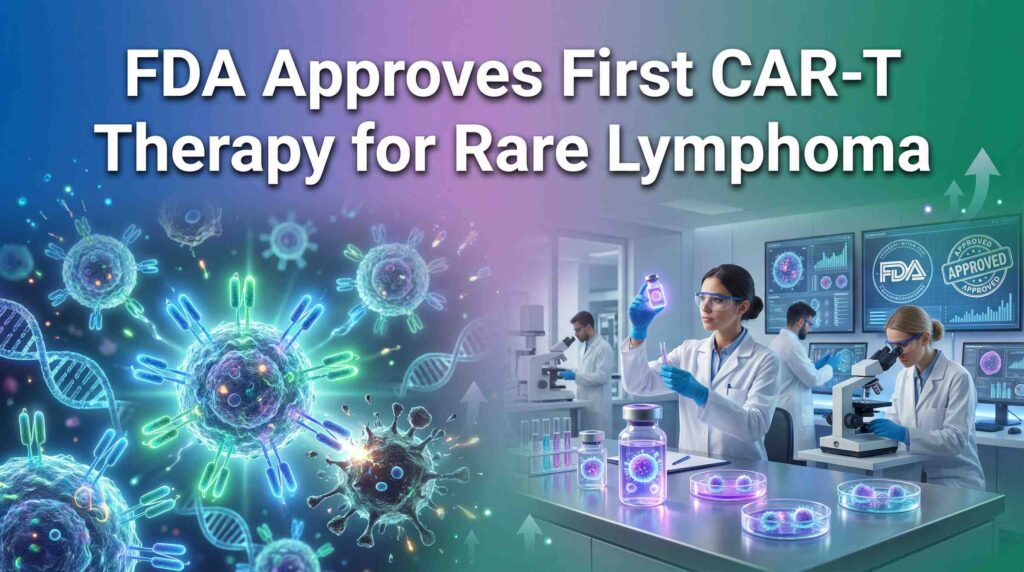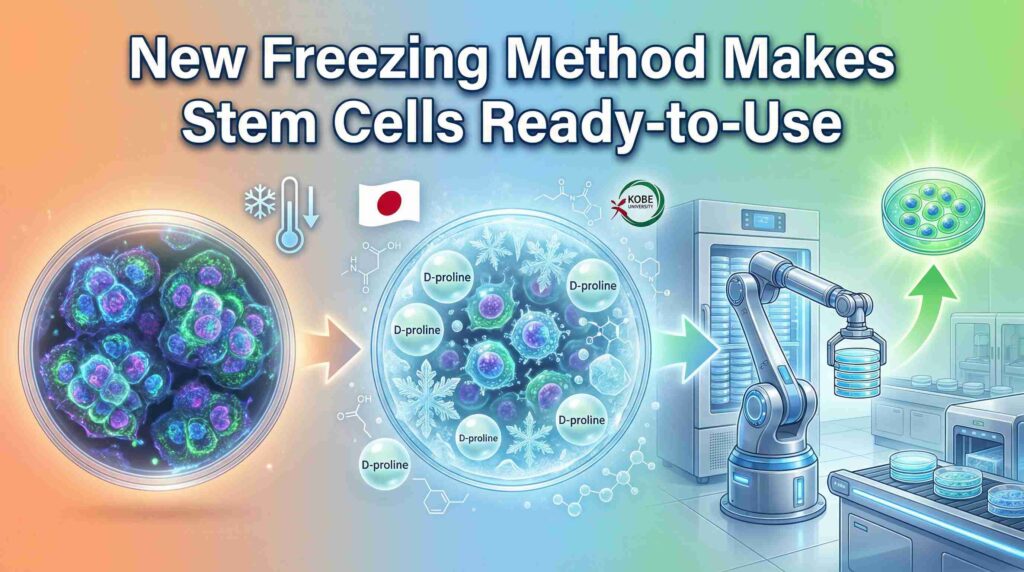If you’re reading this, chances are you or someone you love is grappling with diabetes. It’s a tough journey, isn’t it? The constant monitoring of blood sugar levels, the dietary restrictions, the insulin injections – it can all feel overwhelming. But what if I told you there’s a glimmer of hope on the horizon? What if a life free from the shackles of diabetes could be a reality? Intriguing, isn’t it?
This is a complex topic, and we’re going to take it one step at a time. By the end of this article, I hope you’ll have a better understanding of diabetes, stem cells, and the incredible potential they hold.
So, grab a cup of tea (or coffee, if that’s your thing), get comfortable, and let’s embark on this journey together. After all, knowledge is power, and the more you know about your condition and the exciting developments in the field, the better equipped you’ll be to navigate your path towards a life free from diabetes.
Let’s get started, shall we?
Understanding Stem Cells
Alright, now that we’re all settled in, let’s talk about the stars of our story: stem cells. You’ve probably heard the term thrown around in the news or during a medical show, but what exactly are these little powerhouses?
Definition and types of stem cells
In the simplest terms, stem cells are the body’s raw materials. They’re like the clay that a sculptor uses to create a masterpiece. These cells have the unique ability to develop into many different types of cells in the body during early life and growth. Imagine being able to transform into anything you want – a muscle cell, a brain cell, or even a blood cell. That’s what stem cells can do!
There are two main types of stem cells: embryonic stem cells and adult stem cells. Embryonic stem cells, as the name suggests, come from embryos. They are pluripotent, which means they can turn into more than 200 different types of cells in the body. Talk about versatility, right?
On the other hand, adult stem cells are a bit more specialized. They reside in certain tissues in our bodies and can produce only certain types of cells. For example, blood stem cells can create more blood cells, but they can’t create brain cells.
The potential of stem cells in regenerative medicine
Now, you might be wondering, “What’s the big deal about these cells?” Well, their ability to regenerate and repair damaged tissues is what makes them so special. This is why they hold such promise in the field of regenerative medicine – a field that’s all about restoring the function of tissues or organs that have been damaged by disease, trauma, or age.
Think of it like this: imagine you’re driving a car that’s seen better days, and it’s starting to break down. Instead of constantly trying to fix the old parts or replace them with new ones, what if you could just regenerate the car parts from scratch? That’s the kind of potential we’re talking about with stem cells!
Stem Cells and Diabetes: The Connection
Alright, let’s dive into the connection between stem cells and diabetes.
You see, diabetes is a condition that affects the way your body uses glucose, or sugar, for energy. This happens because the pancreas, the organ that produces insulin (the hormone that helps glucose get into your cells), either doesn’t make enough insulin or doesn’t use it effectively.
Now, here’s where stem cells come into the picture. Remember when we talked about how stem cells can transform into any cell in the body? Well, scientists are exploring how to coax these cells into becoming insulin-producing cells in the pancreas. Imagine having a tiny army of cells that can produce the insulin your body needs. Sounds amazing, right?
Let me share with you a couple of studies that illustrate this potential.
In a study titled “Tailored generation of insulin producing cells from canine mesenchymal stem cells derived from bone marrow and adipose tissue”, researchers were able to generate insulin-producing cells from canine bone marrow and adipose tissue-derived stem cells. This is like teaching your stem cells a new skill – producing insulin!
In another study, “Islet-like organoids derived from human pluripotent stem cells efficiently function in the glucose responsiveness in vitro and in vivo”, scientists created islet-like structures (groups of cells in the pancreas that produce insulin) from human pluripotent stem cells. These structures were capable of responding to glucose and secreting insulin, both in a lab setting and when transplanted into mice.
These studies are just the tip of the iceberg, and there’s a lot more research being done in this area. But the takeaway is this: stem cells could potentially be used to create new, insulin-producing cells in the pancreas, offering a new way to treat diabetes.
In the next section, we’ll look at some more case studies and clinical trials to further illustrate this potential. Stay tuned!
Case Studies and Clinical Trials
Now that we’ve established the connection between stem cells and diabetes, let’s delve into some real-world examples. There are numerous case studies and clinical trials that have been conducted to explore the potential of stem cells in treating diabetes.
In a review titled “Human embryonic stem cell cultivation: historical perspective and evolution of xeno-free culture systems”, the authors discuss the progress made in understanding stem cell biology and the challenges faced in the clinical application of human embryonic stem cells. They highlight the risk of exposure to animal pathogens during stem cell derivation and in vitro propagation, which is a significant concern for the safety of stem cell therapies.
Another review, “New perspectives in human stem cell therapeutic research”, provides an overview of the various clinical trials involving human stem cells. The author notes that while there is considerable data supporting the safety of bone marrow and mesenchymal stem cell transplants, the efficacy data are variable and of mixed benefit. However, the author remains optimistic about the potential of stem cells in treating a variety of conditions, including diabetes.
These studies illustrate the potential of stem cells in treating diabetes, but they also highlight the challenges that need to be overcome. For instance, ensuring the safety of stem cell therapies is a major concern. Additionally, while some trials have shown promising results, others have had mixed outcomes.
Despite these challenges, the field of stem cell research is continually evolving, and with each new study, we get one step closer to a potential cure for diabetes. In the next section, we’ll explore what the future might hold for diabetes treatment.
The Future of Diabetes Treatment: A World Without Insulin?
Imagine a world where insulin injections are a thing of the past. A world where managing diabetes doesn’t involve constant blood sugar monitoring or strict dietary restrictions. Sounds like a dream, doesn’t it? Well, with the advancements in stem cell research, this dream might not be as far off as you think.
The potential of stem cell therapy to replace or reduce the need for insulin is a game-changer. As we’ve discussed, scientists are exploring ways to use stem cells to create new, insulin-producing cells in the pancreas. This could potentially eliminate the need for insulin injections, as your body would be able to produce the insulin it needs on its own.
But when can we expect this to become a reality? Well, it’s hard to say. While the research is promising, we’re still in the early stages. There are many hurdles to overcome, including ensuring the safety and efficacy of stem cell therapies, navigating the ethical considerations, and figuring out how to produce the right amount of insulin at the right time.
And speaking of ethical considerations, it’s important to note that stem cell research, particularly when it involves embryonic stem cells, is a topic of much debate. While these cells have the potential to transform into any cell in the body, they’re typically derived from embryos, which raises ethical questions.
There are also potential risks associated with stem cell therapy, including the risk of the cells not functioning as expected or causing unwanted side effects. As with any new treatment, it’s crucial to thoroughly understand these risks before proceeding.
Despite these challenges, the future of diabetes treatment looks promising. With each new study, we’re getting closer to understanding how to harness the power of stem cells to treat diabetes.
In the next section, we’ll discuss how you can prepare for a life free from diabetes.
Preparing for a Life Free from Diabetes
While we wait for the day when stem cell therapies become a reality for diabetes treatment, there are steps you can take right now to manage your diabetes and prepare for a healthier future.
- Lifestyle Changes: A balanced diet and regular exercise are key to managing diabetes. This doesn’t mean you need to run a marathon or never eat your favorite foods again. It’s about making small, sustainable changes. Maybe it’s a daily walk around the block or swapping out one sugary snack for a piece of fruit. Every little bit helps!
- Stay Informed: Knowledge is power. Stay up-to-date with the latest developments in stem cell research and diabetes treatments. This will help you make informed decisions about your health and give you hope for the future.
- Patient Advocacy: Consider getting involved in patient advocacy. This could involve participating in clinical trials, fundraising for diabetes research, or raising awareness about diabetes and stem cell research. Your voice matters, and you can make a difference!
- Regular Check-ups: Regular check-ups with your healthcare provider are crucial. They can monitor your progress, adjust your treatment plan as needed, and provide you with the support you need to manage your diabetes.
- Mental Health: Living with diabetes can be stressful, and it’s important to take care of your mental health. This could involve talking to a therapist, practicing mindfulness, or finding a support group of people who understand what you’re going through.
Remember, while we wait for advancements in stem cell therapies, you’re not powerless. There are actions you can take right now to improve your health and prepare for a future free from diabetes.
Well, we’ve been on quite a journey together, haven’t we? We’ve explored the world of diabetes, delved into the fascinating realm of stem cells, and looked ahead to a future where a life free from diabetes could be a reality.
It’s an exciting time in the field of stem cell research. Every day, scientists are making new discoveries and inching closer to a potential cure for diabetes. While we’re not there yet, the progress we’ve made is promising.
But remember, while we wait for these advancements, you’re not powerless. You can take steps right now to manage your diabetes and prepare for a healthier future. Eat a balanced diet, get regular exercise, stay informed, get involved in patient advocacy, and take care of your mental health. You have the power to make a difference in your own life.
Finally, I want to leave you with a call to action. Support stem cell research. Whether it’s participating in a clinical trial, making a donation, or simply spreading the word, your support is crucial in advancing this field and bringing us one step closer to a cure.
Thank you for joining me on this journey. I hope you’ve found this article informative and inspiring. Remember, a life free from diabetes is on the horizon, and together, we can reach it.


